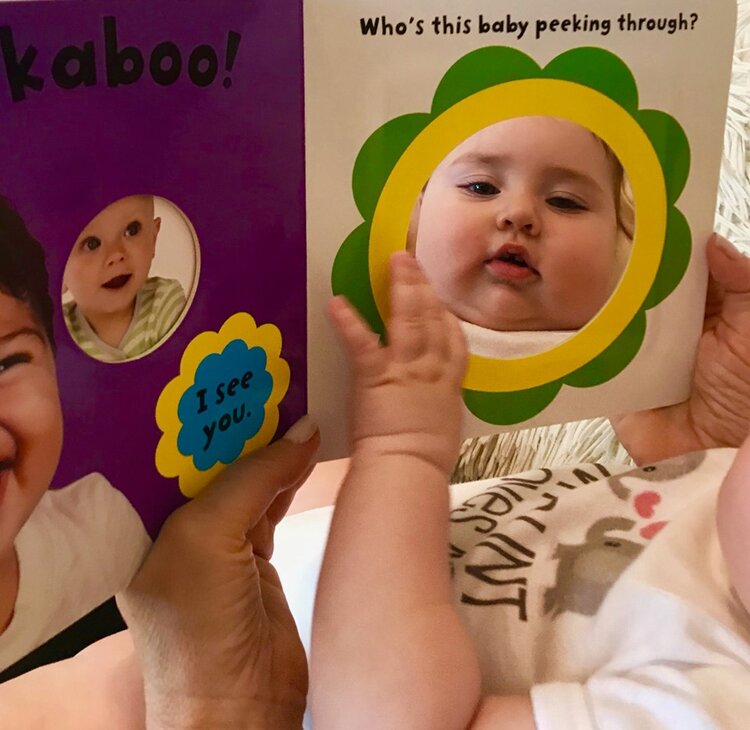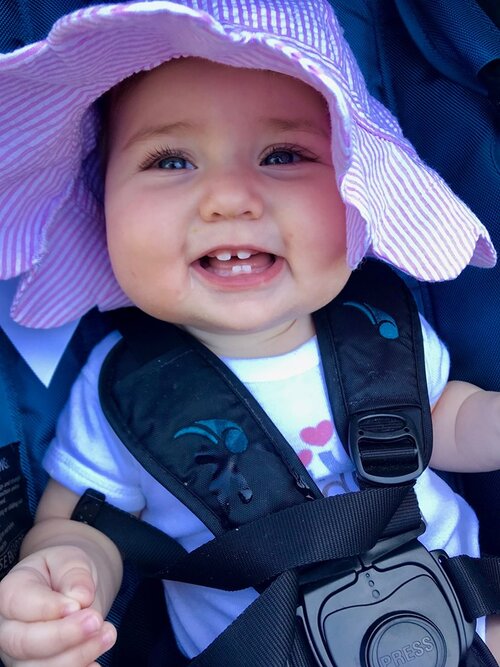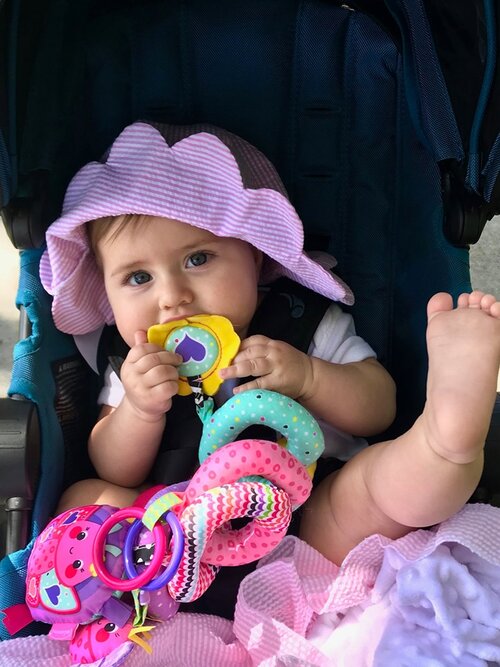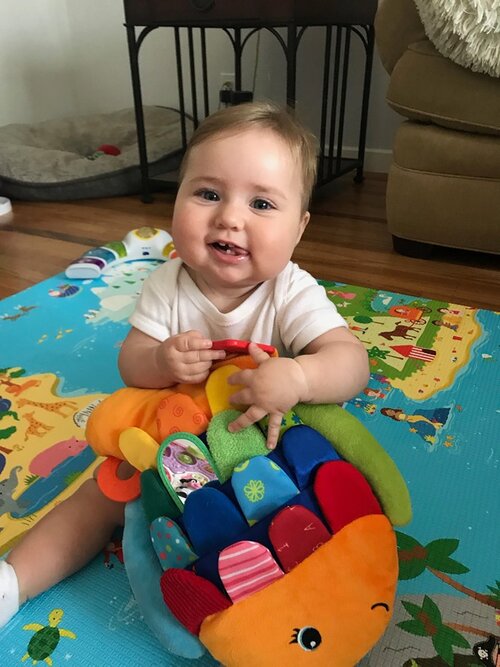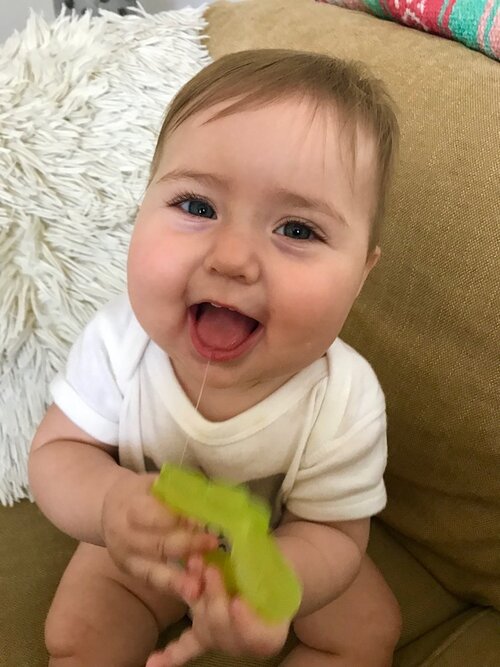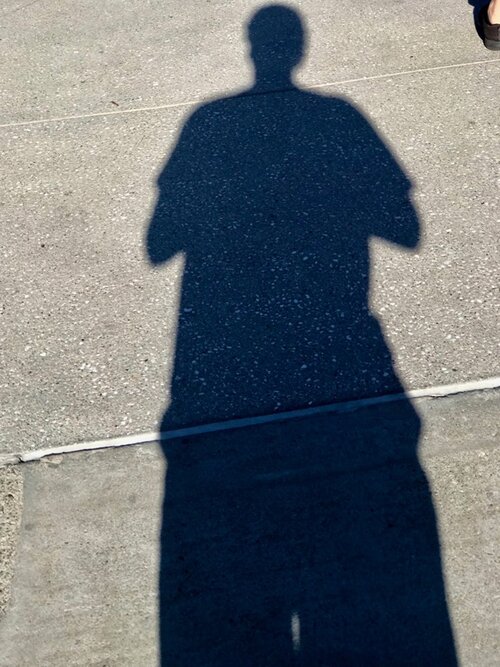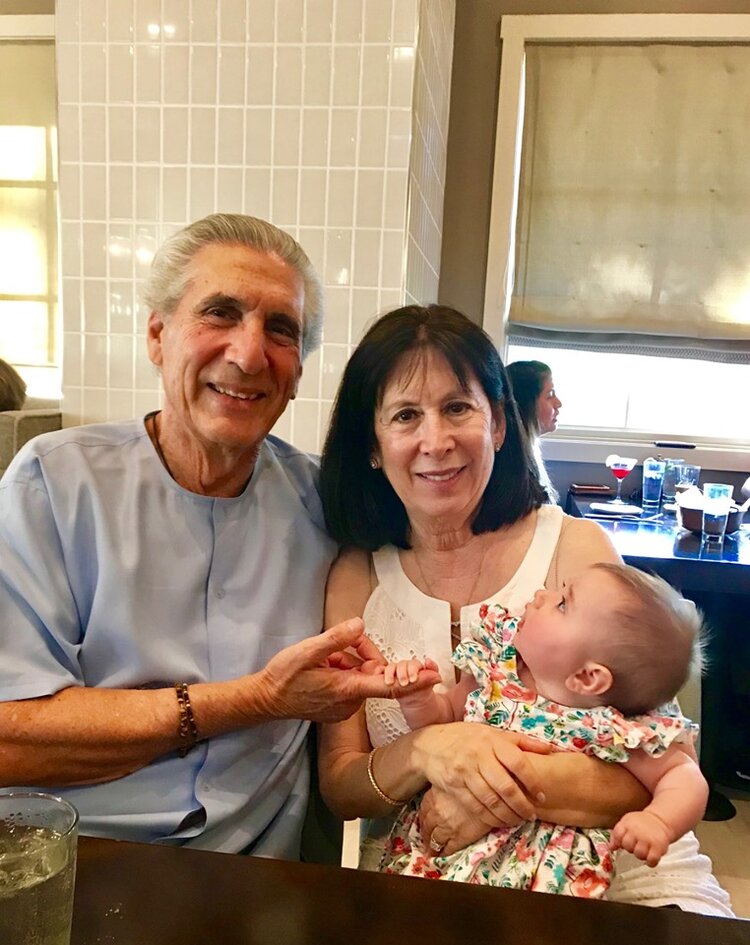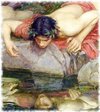“Just when you think you know all that love is…along comes a grandchild.”—author unknown
The best toy that will keep a baby entertained, is not expensive, you probably have one in your own home, and it is great for their development is the bathroom or living room mirror. Like most babies, Lyla, now 9 months old, loves mirrors. We have all seen babies amused and suddenly become very playful in front of mirrors. What first appears as a blur until their eyes develop soon becomes a love affair with their image. In the beginning, the image that they see is their best friend. Before you know it by six and seven months babies like Lyla can see clearly, recognize their parents and are doing Face Time with grandma and grandpa. Though Lyla has been making blabbering sounds for a while, now at nine months old she is making Baby Gaga sounds trying to communicate with her reflection in the mirror and with all of us as well.
Last week my wife Cecile (Nonnie) bought Lyla a book at Books Inc., called Baby Can Do: Peekaboo Baby with a fun mirror surprise (on the last page) by Roger Priddy, Natalie Munday (Editor). This engaging book full of bright photographs of happy babies and colorful objects is basically a peep-through book of babies. After I played with her, fed her, and took her for a long stroll around Red Morton Community Park in Redwood City, Cecile read Lyla the Peekaboo book for the first time. I took a photo of her seeing her reflection in the child-safe mirror on the last page. It was love at first sight. She maneuvered her self forward to kiss the hard surface multiple times.
When humankind first saw their own reflection on any surface that was capable of casting its own image, our fascination began. When I was taking photographs of Lyla at the park I saw a bigger than life shadow image of myself on the concrete walkway and I found myself prompted in a child-like way to take a photo of it.
The Greek myth of Narcissus, the young hunter enamored by his own beauty reflected in a pool of water tells us that our fascination with our image dates back to ancient times. One could say that refection pools were humankind's first natural mirrors.
The Neolithic man produced mirrors made from polished obsidian, a form of volcanic glass. They have been uncovered in central Turkey in 6000 BCE. Later mirrors made their appearance in Egypt and Mesopotamia. Small, copper disc mirrors dating back to 4000 to 3000 BCE have been recovered in the Tigris-Euphrates River Valley in modern-day Iraq.
Ancient Greeks and Romans manufactured mirrors. During a trip to Venice more than 10 years ago, Cecile and I learned that the process of making fine, glass mirrors was later perfected by the Venetians, particularly by glassmakers on the island of Murano dating back to 1364, which became known as the Isle of Glass.
Mirrors have a long and fascinating history. More than just tools to serve our vanity, mirrors occupy an important place in our mythologies, legends, and tales—even on the big screen. In the 1991 Disney version of “Beauty and the Beast,” the Beast has an enchanted mirror that allows the user to see anything he or she wishes to see.
Lewis Carroll’s Through The Looking Glass, and What Alice Found There (1871), the sequel to Alice’s Adventures in Wonderland (1865), where Alice travels again to an alternative world through the magic mirror.
The child in the mirror and in our life is our granddaughter Lyla. May she grow up to love her self, her life and the people around her.
Sources cited:
http://www.mythbeliefs.com/…/mirror-mirror-on-wall-history-…
https://pathways.org/blog/mirrors-good-baby/
